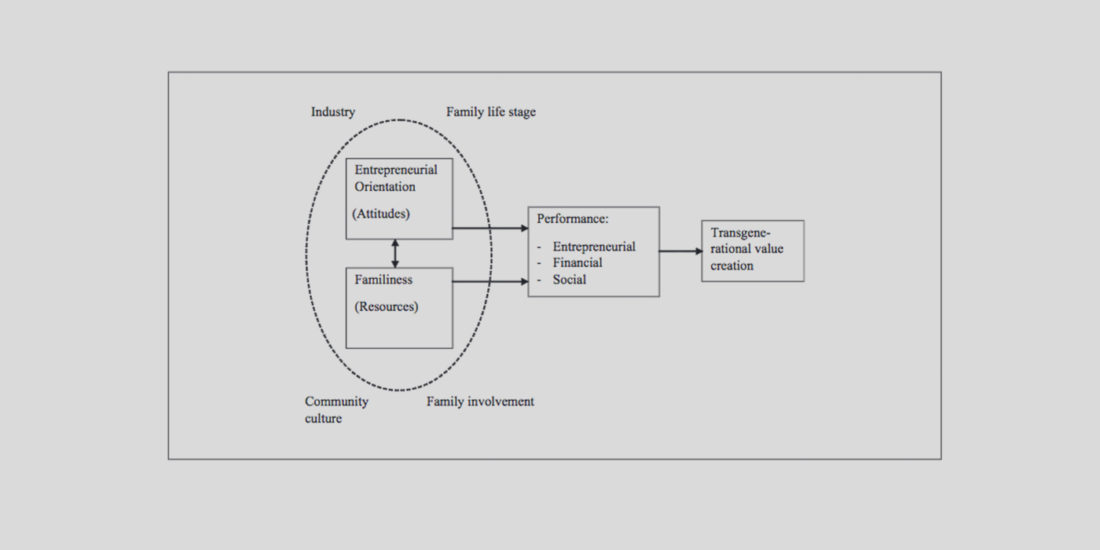
Entrepreneurship
Includes discussions of 1st generation entreprenurial behaviors as well as discussion on creating entrepenurial companies and entrepreneurs across generations.
Transitioning the Family Business Entrepreneurial Culture through Training (for Advisors’ Eyes Only)
Thanks to Sajjad Hamid for contributing this article on incorporating entrepreneurial and intrapreneurial education into family enterprise consulting engagements.
The Virtual Family Enterprise Advisor Has Arrived
Thank you to this week’s contributor, Sajjad Hamid, for his article exploring digital tools that family enterprise advisors can use to expand their practice.
Family Enterprise Advantage: Overcoming the “liabilities of newness”
In this week’s FFI Practitioner, FFI Fellow Lloyd Steier provides an overview of the “liabilities of newness” concept and then uses family business examples to illustrate how the concept can be helpful to practitioners by explaining the family advantage in firm creation, survival, and success.
Family Business Advisor to Knowledge Solopreneur
Thank you to this week’s contributor, Sajjad Hamid, for his article exploring the Knowledge Solopreneur Development Model.
The Entrepreneurship Gene: How to help your clients cultivate theirs
Thank you to this week’s contributors, Judy Lin Walsh and Nick Di Loreto from BanyanGlobal Family Business Advisors, for their article discussing how
Antifragility: What is it and how does it relate to family businesses?
Thanks to this week’s contributor, Markus Weishaupt, for his article exploring the concept of antifragility and how it may apply to family business clients.
Education and the Rules for Engagement: A case study on ways to encourage young entrepreneurs
Thanks to Ricardo Mejia for this case study discussing how education and clear rules of engagement may still be the best strategy for developing young entrepreneurs in family enterprises.
Research Applied: FBR Précis for FFI Practitioner
What organizational configurations lead to the highest levels of innovation in family firms? In this week’s edition, which is a précis of “A Configurational Approach to Family Firm Innovation,” an article appearing in the June 2019 issue of FBR, Navneet Bhatnagar explores this question and its implications for family enterprise advisors.
From Single Business to Portfolio of Businesses: When does the family business become a business family?
Panta rhei. Everything flows and evolves. And family businesses are no exception. From the first-generation founder firm to a real family firm in later generations, and from a single business firm to a complex portfolio business. In some instances, that transition in the family firm – from one to many businesses – happens rather suddenly, in a revolutionary way. Such transformations usually require a few key elements: a natural entrepreneur in the later generations of the family and… a major liquidity event that financially enables the transformation. Marta Widz and
Life Choice or Compulsion: A case study
What can family enterprises learn from a book titled, Who Moved My Cheese? Thanks to this week’s contributor, Ashvini Chopra, for sharing a case study that applies the book’s lessons about change and adaptability to a recent scenario Ashvini encountered with one of his family business clients.
Research Applied: FBR Précis for FFI Practitioner
In a rapidly evolving and increasingly competitive environment, is the need for an Entrepreneurial Orientation critical to ensuring the long-term survival of family firms? In this week’s edition, which is a précis of “Entrepreneurial Orientation and the Family Firm: Mapping the Field and Tracing a Path for Future Research,” an article appearing in the September issue of FBR, Maya Prabhu explores this question and the important implications of this research on the field.
Research Applied: FBR Précis for FFI Practitioner
This week’s FFI Practitioner continues the month-long series of editions relating to the theme of “Reflections.” Thank you to Ken Moores for this reflective précis, where he examines the research conducted about developing a legacy of an entrepreneurial mindset in “The Development of an Entrepreneurial Legacy: Exploring the Role of Anticipated Futures in Transgenerational Entrepreneurship,” an article that appears in the September 2018 issue of FBR.
Increasing Open Innovation in Family Firms
Family firms, like all modern businesses, must depend on growing levels of innovation in order to survive in an increasingly competitive global marketplace. This week, Diogo Cotta and Niklas Rossbach from Maastricht University discuss some alarming trends concerning innovation in family businesses and introduce a research project they’re conducting to learn more about how family businesses approach innovation opportunities.
Introducing Family Entrepreneurial Orientation
Whereas existing research on the longevity of family firms has focused on the survival of firms, this article investigates transgenerational entrepreneurship of families.
Keep the Creativity and Innovation Plugged In!
Usually the most prized thing that we as established practitioners lose is our creativity. Once a niche is carved and sustained over decades of hard work, inevitably, at some point in time, complacency sets in.
Transforming to a Family of Adults: A foundation for healthy generational transitions
Thanks to Sally Derstine, senior family business advisor with the Delaware Valley Family Business Center, for the following blog on “Transforming to a Family of Adults: A foundation for healthy generational transitions”.
Building Entrepreneurs Across Generations Requires Influence
When Allan R. Cohen and David L. Bradford first published Influence without Authority in 1990, most companies were hierarchical and running on principles derived from the military or early bureaucracies.
The Driving Force of Family Businesses
Thanks to this week’s blogger, Luke Simmering, for his focus on the “driving force” in family business.
Family Governance at Work: Organizing for new product development in family SMEs
Research Applied précis prepared by Kim Schneider Malek, Family Enterprise Alliance, LLC Innovation is more than just a hot topic for start-up companies.
Myth and Reality: Why are family firms considered less innovative?
Family firms are usually considered more conservative, averse to taking risks and hardly innovative, as compared to non-family firms.



















